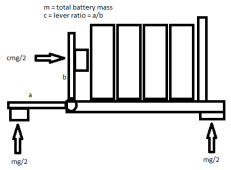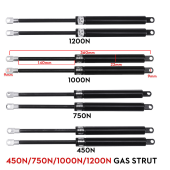One way it stacking the cells vertically with ~ 300 kg of weight on top to ensure a constant pressure no matter what the expansion of the cells is
Obviously the bottom cell will get a higher load than the top one
In my drawing one side of the battery pack (right) is constrained and the other one on the left is made of a lever that reacts to the force on the ground, basically the weight of the batteries and any additional weights you want to add to the enclosure.

Obviously the bottom cell will get a higher load than the top one
In my drawing one side of the battery pack (right) is constrained and the other one on the left is made of a lever that reacts to the force on the ground, basically the weight of the batteries and any additional weights you want to add to the enclosure.




